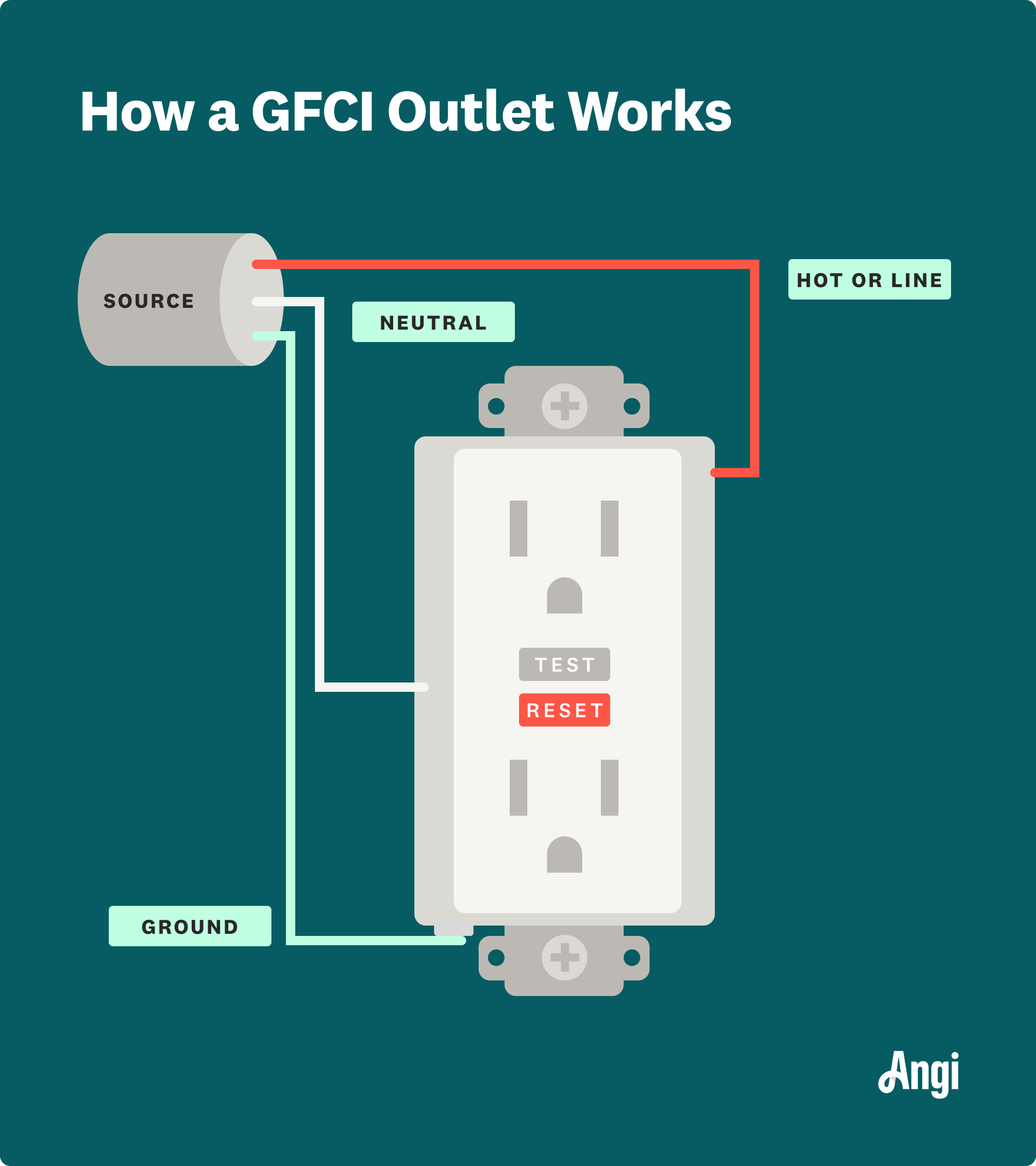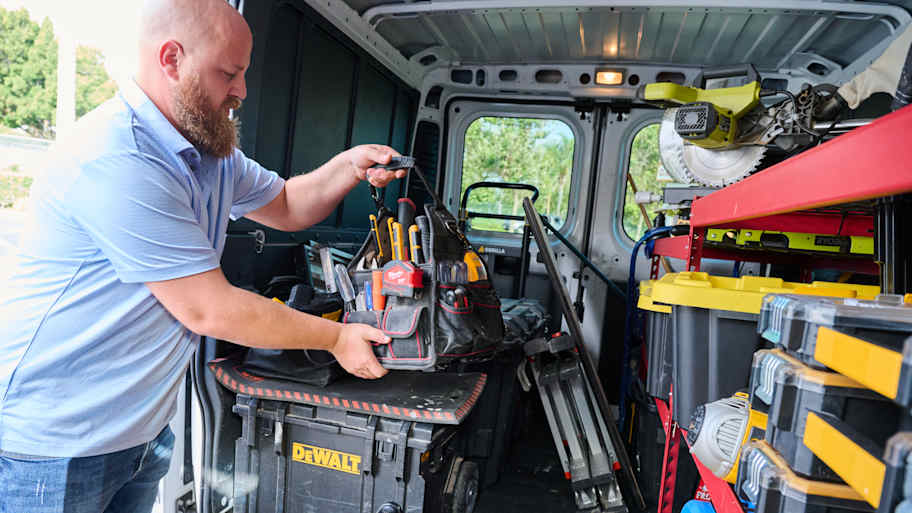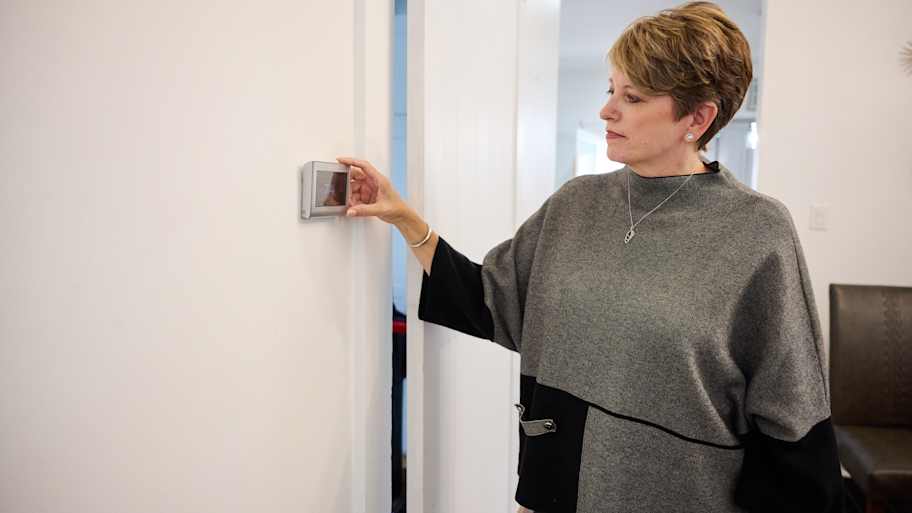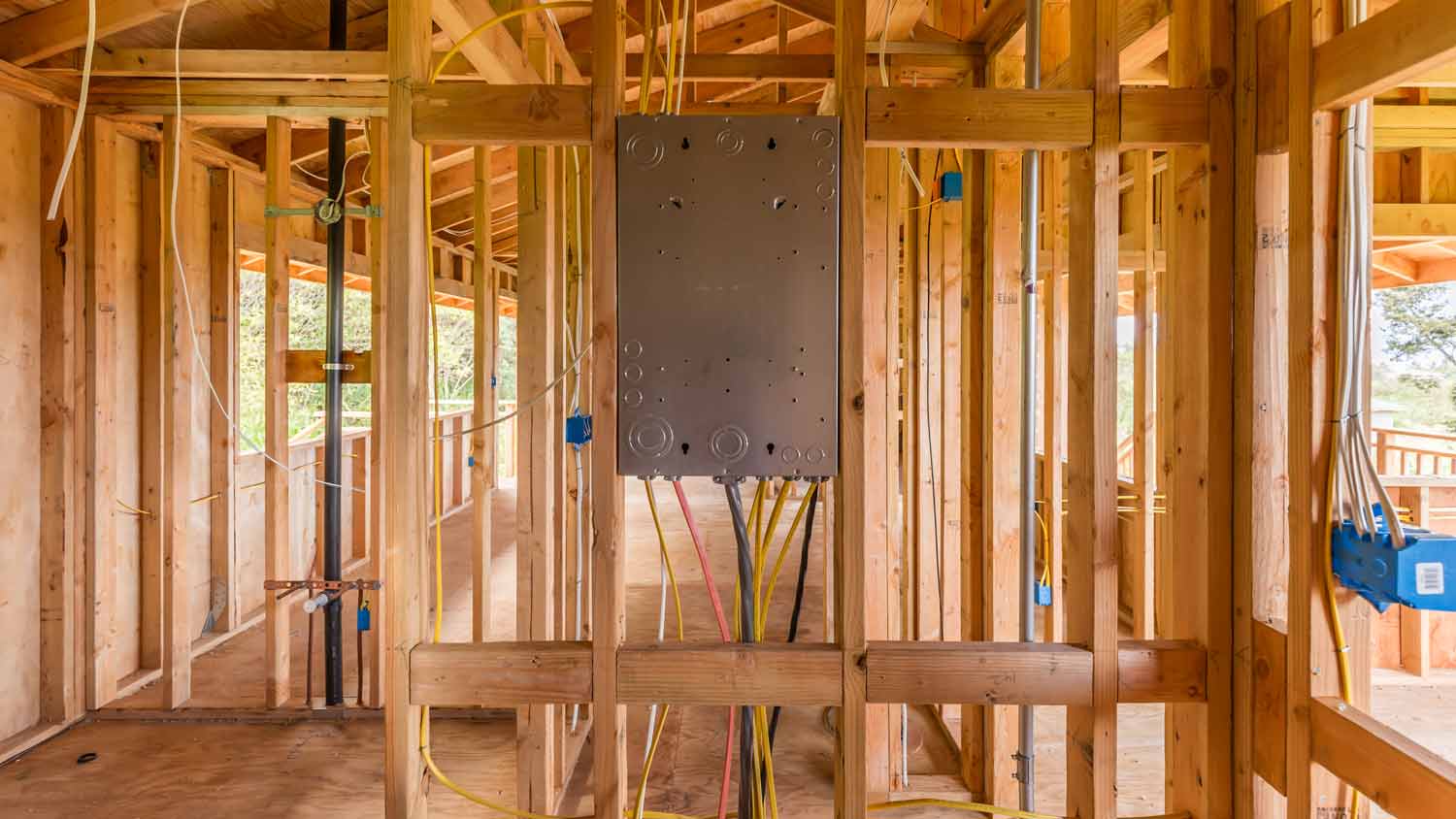How Much Does It Cost to Install an Outdoor Outlet? [2025 Data]
Installing an outdoor outlet costs $225 on average and often ranges from $150 to $260, depending on labor costs and electrical specifics of the home.


Outdoor outlets have protection against the elements while allowing you to access electricity in your outdoor living spaces.
An electrician will always install an outdoor GFCI outlet with a protective cover.
Switches, additional wiring, or a new electrical panel increase your bottom line.
Installing an outdoor outlet is not a DIY job and always requires the guidance of a certified electrician.
The average cost to install an outdoor outlet is $225, though the price can range between $60 and $300. All outdoor outlets must be GFCI protected, making the project slightly more expensive than replacing indoor outlets. Read on to learn all about the cost to install an electrical outlet outside so you can level up your backyard enjoyment.
Outdoor Outlet Installation Cost Breakdown
So how much will you spend on each part of your outdoor electrical outlet installation? It depends on several factors and services.
| Cost Factors | Cost Range |
|---|---|
| Outlet material | $17–$40 |
| Outlet cover | $10–$20 |
| Tapping outlet or new wiring | $7–$10 per linear foot |
| New circuit | $250–$900 |
| Electrical panel upgrade | $1,300–$4,000 |
| Labor | $40–$100 per hour |
Number of GFCI Outlets
The cost per outlet to install an outdoor GFCI outlet depends on the number of outlets. Installing multiple outlets at once will make the cost per outlet decrease, and you can potentially bundle the projects into one visit from your local electrician.

A ground-fault circuit interrupter (GFCI) outlet is a safety mechanism that contains a sensor to monitor the flow of electrical currents through wires. A "ground fault" occurs when hot wires touch any part of a grounded device. GFCIs protect you from the risk of being shocked by breaking the circuit whenever it detects an imbalance. The National Electrical Code requires all outdoor outlets to be GFCI outlets. The actual cost of the outlet material can range from around $17 to $40.
Outlet Cover
If you'll be using your exterior outlet to plug in various outdoor tools from time to time, a box-shaped weatherproof outlet cover made of plastic will do—these range from $10 to $20.
If you're planning to use your outlet for extended periods to keep outdoor features running, you should be able to buy an in-use cover for about the same price.
Tapping Outlet or New Wire
Rather than running new wire from your breaker box, you may choose to tap into an existing outlet inside your house. Since running new wire can cost between $7 and $10 per linear foot, tapping into an existing outlet will be less expensive.
New Circuit
It costs between $250 and $900 to install your outdoor outlet on a new dedicated circuit on your electrical box. The distance from your breaker box and the complexity of the circuit will affect the price, with a greater distance from the breaker box, and a more complex circuit type costing more.
Electrical Panel Upgrade
If you don’t have the capacity to add a circuit for your outdoor outlet, upgrading your circuit breaker box can cost between $1,300 and $2,500 for a 200 amp panel. A 400 amp panel will cost between $2,500 and $4,000.
Labor
The labor fees are the most significant expense associated with installing an outdoor electrical outlet. The hourly cost to hire an electrician can range from $40 to $100. Your labor costs may include travel time. Running an outlet off an existing exterior outlet will take less than an hour, while starting from scratch could take several hours to a day or more.
Minimum Fees
Most electricians will charge a minimum flat rate for a job. A minimum fee for an electrician to do a simple job is between $80 and $100. The minimum fee depends on the service and location of the job, so ask your electrician about their minimum charge before hiring.
Type of Electrician
An electrician that specializes in residential and domestic installations is the best choice to add an outdoor outlet to your house. These contractors will be best suited to add an outlet to your existing home system.
Additional Cost Factors to Consider
There are a few other cost factors to keep in mind before you get the ball rolling on your outdoor outlet installation.
| Extra Expenses | Cost Range |
|---|---|
| Adding electrical panels | $1,200–$5,000 |
| Adding electrical box | $125–$300 |
| Moving outlet | $200–$300 |
| Install switches | $75–$200 |
| Outlet expanders | $10–$35 |
| Childproofing | $10–$30 |
Electrical Upgrades or Rewiring
If you'll be adding some upgrades or rewiring work when installing your GFCI outlet, expect to pay for parts and labor for these projects. If your home is more than 30 years old, your electrician may need to do additional work to get everything up to code before being able to legally complete your new GFCI installation.
Adding Electrical Panels
Adding a new electrical panel allows you to have the appropriate amount of circuits needed to protect your home. Expect to pay between $1,200 and $3,000 for a standard panel offering between 100 amps to 200 amps. Larger specialty panels can cost up to $5,000. Your electrician may recommend adding new electrical panels if you're installing a new GFCI outlet to accommodate a heated pool, a hot tub, outdoor lighting, or some other major appliance that will increase your home's energy output. Adding new outlets to increase your home's electrical load without making the necessary infrastructure upgrades could cause electrical overload.
Adding Electrical Box
When adding a new electrical box, costs range from $125 to $175. However, special pricing may apply for complex installations that can bring the cost up to $300.
Moving an Outlet
If you're moving an outlet to better accommodate your home's layout, expect to pay between $200 and $300 for the cost of adding a new circuit, rewiring work, and drywall work.
Installing Switches
The cost to install new switches in a home can range from $75 to $200. When choosing modern dimmer switches, the actual hardware cost is between $10 and $45.
Outlet Expansion
The cost for outlet expanders can range from $10 to $35. Most products allow you to expand to six outlets. If you'll be adding surge protectors, expect to pay between $10 and $30 per unit.
Childproofing
If you'll be childproofing your electrical outlets on your own, packs containing between eight and 100 outlet plugs can be purchased for between $10 and $30. You can also consider having an electrician install tamper-resistant outlet covers that have a spring-loaded feature that prevents the outlet from ever being exposed when not in use. These outlets cost roughly $30 for a pack of 15.
Cost to Replace an Outlet
Usually, replacing an outdoor outlet is a simple, 10- to 15-minute job for an electrician. Replacing an outlet costs between $75 and $485 per outlet, depending on the minimum rates for an electrician in your area and the cost of materials. You can expect to pay less for replacing standard, easy-to-access outlets than replacing advanced, difficult-to-reach outlets.
How Much Does It Cost to Install an Outdoor Outlet Yourself?

Installing an outdoor outlet shouldn't be done without proper home electrical education, as you could harm yourself or your home. So if you don’t know how to approach this project confidently, hire a licensed electrician near you and take solace in the fact that you’re not mixing electricity and DIY YouTube videos.
But if you’re a particularly handy homeowner with previous electrical experience, you could save about 80% of the cost to install an outdoor outlet if you DIY. Installing an outdoor outlet yourself should cost less than $60 for the project, which accounts for the price of the outlet and outlet cover. Most GFCI outlets from big-box stores cost between $17 and $40, which is about $12 to $25 more than a traditional outlet. The outlet covers run between $10 and $20.
DIY vs. Hiring a Pro
To be extra clear: installing an outdoor electrical outlet is something that should generally only be handled by a licensed technician. The risks for shock and electrocution are simply too high for a typical homeowner to do a DIY outlet installation. Besides the risk of electrical shock, improper installation can create a serious fire hazard at your home. Failing to properly install an outlet can also put your home's insurance policy at risk if an accident were to happen.
Finally, homeowners must follow local codes to a T whenever a new electrical outlet is installed—and the average homeowner isn't usually equipped to do code-level work. Homeowners attempting a DIY GFCI installation would need to have the knowledge necessary to turn off power to the area, remove the existing outlet, identify all line wires, connect wires, install the new GFCI into the wall box, and do finishing work on the new wall plate.
How to Save Money When Installing an Electrical Outlet Outdoor
One of the ways to simplify this project is to choose an installation site that's located within the same stud cavity as a preexisting indoor outlet. Tell your electrician about your preference for choosing a spot with easy access to ensure that you're not charged for a project that's more elaborate than necessary. The best way to save money on a GFCI installation without cutting corners is simply to be thorough about getting quotes from at least three local electricians.
Scott Dylan Westerlund contributed to this piece.
Frequently Asked Questions
When installing an outdoor outlet, it's important to proceed with caution. Unless you have the necessary training and licensure, it's not recommended to attempt this DIY. First, choose a suitable location. Make sure that the area can accommodate the outlet without overloading the circuit. You'll also need to ensure that your project complies with building codes. Next, turn off the power to the circuit, then install and wire the outlet according to the manufacturer's instructions. Once the outlet is in place, test it. Lastly, be sure to use a cover that will protect it from moisture and other weather-related damage.
No, outdoor outlets are not required to be on a separate circuit. However, you should always defer to local electrical codes when making decisions about how to install your new outlet. An experienced local electrician will be able to inform you of all codes and requirements in place at your home.
The number of outdoor outlets that can be on one circuit depends on the circuit's capacity and the electrical load of each outlet. Outdoor outlets should ideally be on a dedicated circuit that is not shared with other outlets, and each outlet should be rated for at least 15 amps. A circuit rated for at least 20 amps is recommended. It’s important to use GFCI protection for all outdoor outlets to prevent electrical shocks. Overall, it's crucial to avoid overloading the circuit and take necessary safety precautions.
Outdoor outlets should be at least 15-amp, but preferably 20-amp. The exact rating will depend on the electrical load of the devices that will be plugged into the outlet and the capacity of the circuit. It's important not to overload the circuit, which can cause safety hazards such as tripped breakers or electrical fires. In general, a circuit rated for at least 20 amps is recommended for outdoor outlets, while each outlet should be rated for at least 15 amps.
Yes, GFCI breakers are required for all outdoor outlets. This code requirement applies to all outlets located on balconies, decks, patios, and other outdoor lounge spaces. In addition, outdoor outlets need to have watertight covers that provide protection when cords are plugged in. If you have an older home that may not be up to code, it's a good idea to also ask your electrician about adding GFCIs to some indoor areas. Kitchens, bathrooms, basements, and any other areas of a home that are commonly exposed to moisture should have GCFI breakers.
Technically, an outdoor outlet can be on the same circuit as an indoor outlet, but it's generally not recommended. Outdoor outlets should ideally be on a dedicated circuit that doesn't share power with other indoor or outdoor outlets. This helps ensure that the outdoor outlets are able to handle the additional electrical load without overloading the circuit. Additionally, outdoor outlets are often exposed to the elements, which can increase the risk of electrical shock and other hazards. If you must have an outdoor outlet on the same circuit as an indoor outlet, be sure that the circuit has the capacity to handle the additional load.



.jpg?impolicy=leadImage)

- Home Generator Repair
- Lamp Repair
- Electric Repair
- Generator Installation
- TV Antenna Services
- Emergency Electricians
- Commercial Electricians
- Attic Fan Installation
- Attic Fan Repair
- Exhaust Fan Installation
- Electric Inspectors
- Subcontractors
- Electrical Construction
- EV Charger Installer
- Chandelier Installation
- Doorbell Installation
- Bathroom Fan Installation
- Ring Installers
- Electrical Panel Upgrade










